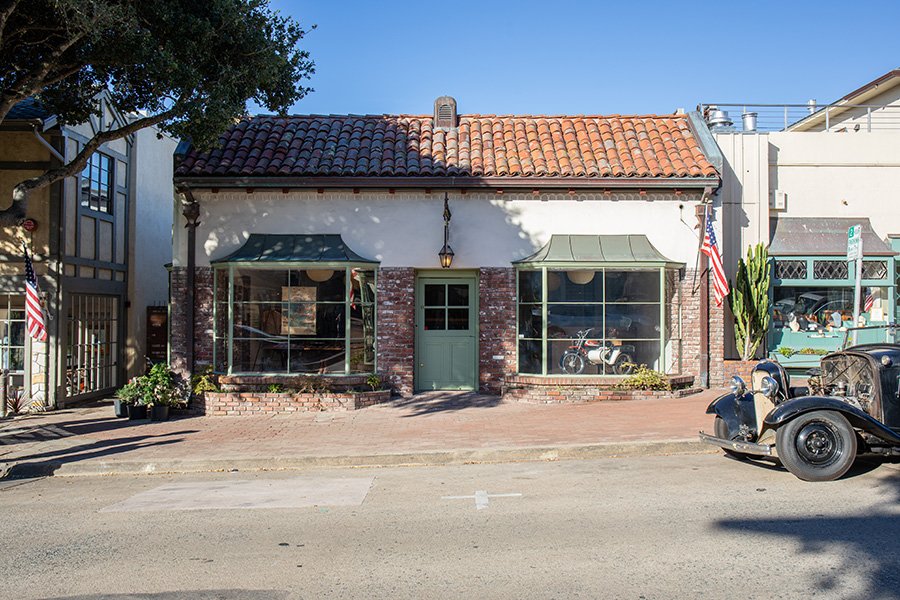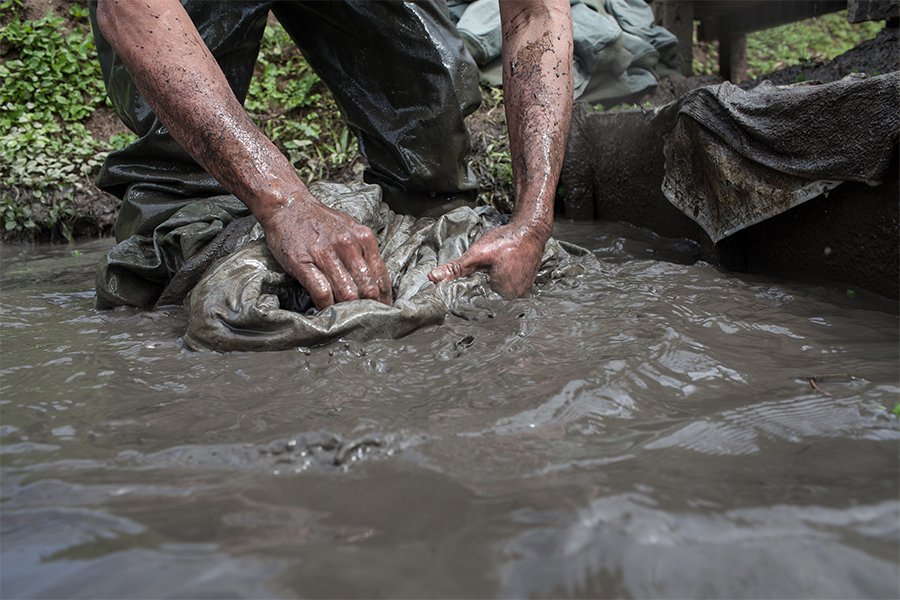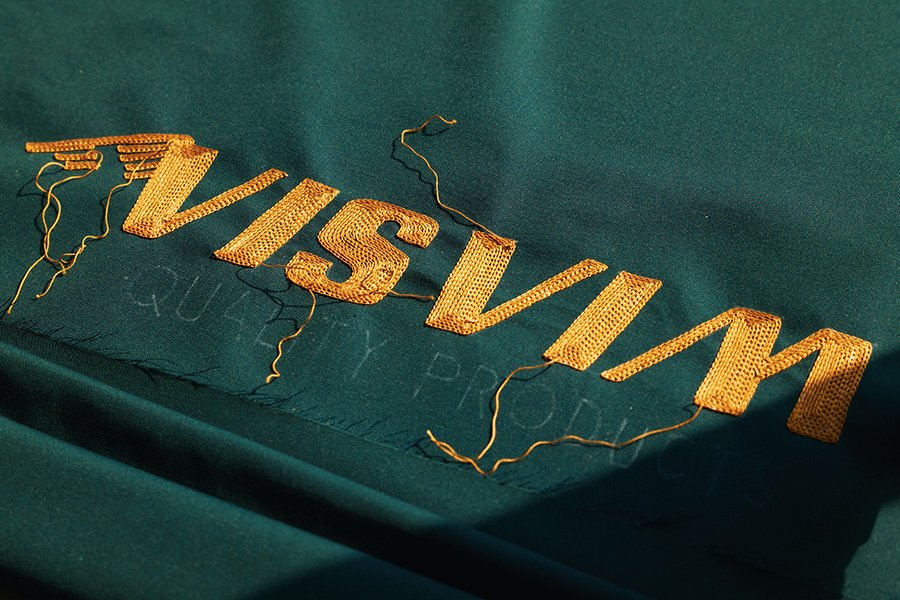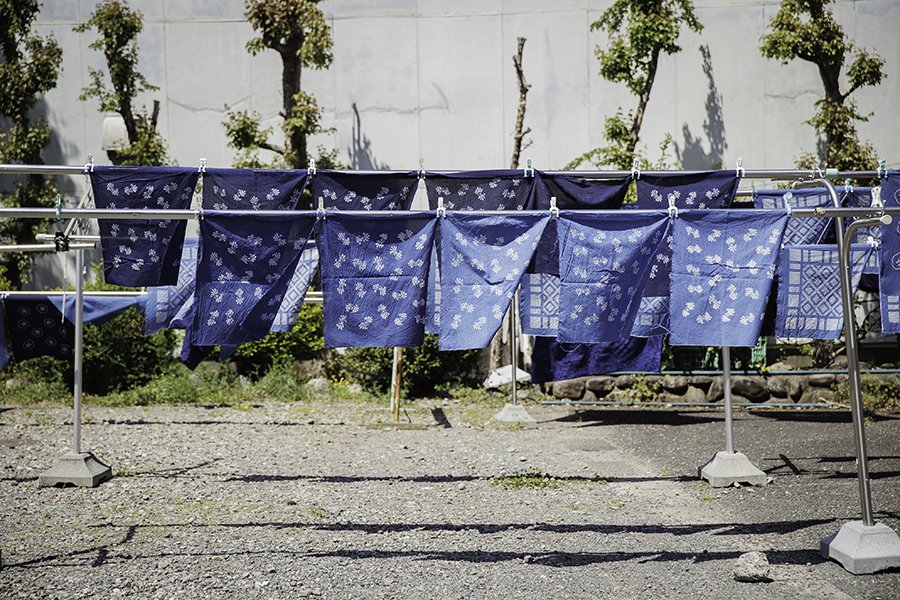Dissertation
Spinning
How can I approach making something that has the same charm as something I find beauty in. It may be possible to make something appear similar on the outside, but I think that is different from the real authentic feeling that I am chasing. As a result of my pursuit to create the same charm that reveals itself from the inside rather than a superficial place, I found myself creating my own yarns, the foundational aspect of all materials.
| Category: | Processing |
|---|
| Date: | 2023.12.26 |
|---|
| Tags: | #spinning #ss24 #visvim |
|---|
In search of charm that reveals itself from an internal place, our process begins with making our own yarn.
The unique texture and hand feel found in fabrics used for garments can vary depending on the structure of the way it is woven or knit; however, it can perhaps be agreed on that the most foundational aspect of a fabric is the yarn that constitutes it. The making of a single thread of yarn can be a long and complicated process where there are almost an infinite number of choices available, including the material of choice, the length and thickness of a fiber, as well as how it is twisted.



It is commonplace in the manufacturing process of clothing for organizations to exist that are responsible for spinning yarns that are developed in advance and made available for use by clothing manufacturers from a pre-determined set of manufactured yarn options. At visvim for many of our products we create our very own custom yarns by working closely with our suppliers from an earlier stage in the process of "making yarns." Creative Director, Hiroki Nakamura shares his thoughts on our process by saying, "That real authentic feeling will not reveal itself unless you make it from scratch."
"How can I approach making something that has the same charm as something I find beauty in. It may be possible to make something appear similar on the outside, but I think that is different from the real authentic feeling that I am chasing. The feeling that I am describing is something that can be felt with the five senses by seeing or touching it and cannot simply be understood or felt just by looking at a photo on a screen. As a result of my pursuit to create the same charm that reveals itself from the inside rather than a superficial place, I found myself creating my own yarns, the foundational aspect of all materials."




Osaka based Taisho Boseki a spinning company in operation since 1918 is our indispensable partner in charge of the work to execute the making of our very own yarns. The Senshu region where the company's facilities are located was once the center of a thriving textile industry where many spinning factories used to exist, however these days the production base has moved overseas where labor costs are lower and only a select few remain today. As spinning factories in other parts of the country are closing their doors one after another, Taisho Boseki is a rarity that remains dedicated to smaller production runs of a greater variety of cotton yarn options that are meticulously made with great care regardless of whether the process may be considered inefficient.


We speak about "Cotton" the material as a singular word, however there is an amazing variety of different types of cottons. Yukihiro Morita who we consider to be the "Cotton Meister" of Taisho Boseki's production department proudly states, "We carry the widest variety of cotton in the world."
"There is some extra-long staple cotton (cotton with an average fiber length of 35mm or more) we have that represents only about 1-2% of the world's cotton production, as well as 4 different types of organic cotton, and we also have 5 other cotton types available. Even when comparing well known extra-long staple cottons like Indian Suvin Gold, American Supima, or Egyptian Giza each one has a different staple length, thickness, and color. Even with the same types of cotton, the quality can experience variation depending on the particular climate conditions during the year of harvest. To fully understand this, we visit the places of origin in person and touch the raw materials and speak directly with the farmers so we can carefully assess and consider what we want to offer to our customers."




The process of producing cotton yarn requires a great number of steps. It starts with the removal of impurities, followed by a step that gathers the cotton into a rope like shape, which then gets stretched out several times over, then finally twisted into yarn, concluding with a final quality check. A particularly important part in the company's production of cotton yarn is done by what is known as the "Ishikawadai" a ring spinning machine which was first manufactured by the Ishikawa Seisaku-Sho in 1953. The Ishikawadai is able to spin yarn while applying minimal stress to the cotton, although its productivity is only one third of the capacity of the latest spinning machines, the "fluctuation" caused by the natural unevenness of the machine creates a texture that is similar to a hand-spun yarn. It takes advantage of the characteristics it produces that are not uniform and instead promotes this irregularity as an attractive feature. Old machinery naturally requires a lot of maintenance and work, but they produce a "flavor" that cannot be replicated by machines of today. Instead of relying only on computers to conduct quality checks of completed yarns, it is essential to entrust the intuitive judgement of a seasoned craftsman's visual and tactile senses.





"Each and every type of cotton has its own characteristics. There are some that are rare and some that are more expensive compared to others, however they are all "good cottons" including the previously described two. Does one prefer a moist and soft finish, or one that is a dry and hard finish. Depending on what the vision is for the desired texture a countless number of elements including the type of cotton and the degree of twisting get adjusted to bring things closer to what the image is. Our work and output can only be successful when we have a customer who can appreciate and understand our delicate sensibilities."
Text: Kosuke Ide
Photo, Movie: Keisuke Fukamizu
Movie edit: cubism

Ultimate Pima Yarn
A custom yarn we developed is used on a number of styles from the SS24 product collection. Ultimate Pima is the raw cotton that is utilized for this yarn and it is organically grown in the United States. It also happens to be the same seed as the "Sea Island" variation which is grown in a different country. Of the several extra-long staple cottons this particular one is of high quality and possesses a long staple length while being very durable. The cultivation period for this variety is about a month longer than other cottons and it has a low yield per planted area that contributes to its scarcity.
The desired texture and hand feel that we seek in a fabric woven with this yarn is not exactly an elegance that is defined by being "moist" and "soft" but rather a "dry" and "firm" feel. We take into consideration the most appropriate combination of twists to the yarn as well as yarn count (a unit that represents the thickness of a yarn) and assign that outcome to a specific product design.
Chino Cloth
A twill woven material that utilizes 100% Ultimate Pima Yarn for both the warp and weft. The yarn is spun on an old spinning machine belonging to Taishoboseki that yields a unique finish that has a naturally irregular feel to it. This woven material has an uneven appearance that is reminiscent of Pre-1950's military fabrics. With more wear and use one can experience the fine quality of the raw cotton that begins to break in to develop a beautiful hand feel.


A mesh cap that is made with Ultimate Pima Yarn Chino Cloth. Available in BLACK, GREY, & BLUE. Scheduled for release in Late May.

A racing pant that is made with Ultimate Pima Yarn Chino Cloth. The pants have damaged finish detailing that is done by hand. Available in IVORY, BEIGE, & NAVY. Scheduled for release in Late-May.
Moleskin
A satin weave material that utilizes 100% Ultimate Pima Yarn for both the warp and weft. This material has a dry, tough feel, but remains soft to the touch because of its high-density woven nature.


An open collared long sleeve shirt that is made with Ultimate Pima Yarn Moleskin. The shirts have damaged finish detailing that is done by hand. Available in BEIGE, LT. GREEN, & NAVY. Scheduled for release in Mid-March.
Twill Cloth
This material utilizes 100% Ultimate Pima Yarn for both the warp and weft. It is a twill woven fabric that is more densely woven with a finer yarn count in comparison to the Chino Cloth. Following careful analysis of military fabrics from the 1940's we made multiple prototypes of this fabric and adjusted the degree of twist and yarn count for each round of sampling. The weight and durability of the final outcome is suitable for both outerwear and pants.

A swing top jacket that is made with Ultimate Pima Yarn Chino Cloth. Available in IVORY, NAVY, & LT. BLUE. Scheduled for release in Early-March.










